The pores on nose are the entrances to hair follicles that are on your skin. Sebaceous glands join these hair follicles. These glands produce a natural oil known as sebum that keeps your skin hydrated. Although pores on nose are essential for your skin’s health, they are of different sizes. For example, the pores in your nose are generally bigger than those found in other areas that make up your skin.
This is due to the sebaceous glands beneath their skin being bigger, too. Also, you are more likely to have larger nose pores if you have oily or greasy skin. The enlarged pores on nose can also be genetic. There’s no way that you can do to reduce large pores on your nose. However, there are ways to improve their appearance. Seem more compact. Learn more about the causes of the enlarged pores on nose and how it could be done to prevent them from happening.
Also read this article: How to Take Care of an Oily Nose?
What Causes Large Pores on Nose?
Many factors can cause the pores on nose to appear stretched larger and visible. In most cases, the tiny dots that appear across your nose aren’t blackheads or whiteheads, and they don’t require exfoliation. However, genetics, blocked pores, and hormonal issues such as hormone changes and acne can cause your pores to appear larger. In addition, your lifestyle choices can affect the appearance of the pores of your nose.
Sun exposure:
The nose is the most exposed part of the face and is subject to sun damage. Excessive exposure to the sun affects the firmness of the skin, which in turn increases the size of the nasal pores.
Age:
Our chief dermatologist, Dr. Harish Koutam, explains: Enlarged nasal pores are not associated with medical skin conditions. Instead, your genes play an important role in determining the size of your skin’s pores. In addition, physiological changes in the epidermis cause the big open pores of the nose.
With increasing age, the production of proteins such as collagen and elastin in the skin decreases. This makes the skin relax, stretching the pores and making them look bigger.
Dry skin:
People with dry skin may also have enlarged and dilated pores in their noses. It happens when your body responds to dry skin by producing and secreting excess sebum.
Absence of Skin Exfoliation:
Regularly rubbing and exfoliating the skin will help remove any accumulated oil, debris, and dead skin cells. Failure to exfoliate your skin regularly can clog your skin pores, leading to open and dilated pores.
Hot and humid climate:
Hot and humid weather can also make the skin pores look large and stretched. In addition, these weather conditions make the pores more prominent.
Poor skincare:
Individuals who do not take regular skincare according to their skin type and specific needs are more likely to accumulate dead skin cells, bacteria, and excess sebum in their skin pores.
Acne:
Skin disorders like acne occur when excess sebum, debris, and dead skin cells block the hair follicles in your pores. This can make the pores look big and stretched. The following remedies and treatments to treat your acne can help reduce the chance of clogged nasal pores.
Stress and hormonal imbalances:
Factors such as significant stress and hormonal imbalances can affect the way your skin produces sebum as well as your complexion in general. Stress and hormonal fluctuations can also contribute to several causes of enlarged nasal pores, such as acne.
Diet:
Diet is critical to your total health and happiness. However, it also affects the appearance and health of the skin. By following a nutritious diet without junk food and oil, fat, and sweetened products, you can ensure your skin remains naturally plump, healthy, and beautiful. Some food allergies and intolerances can also affect your skin’s health.
Genetics:
Your genes can determine the size of your skin’s pores, including your nose. Some individuals have increased in size due to their complexion and specific characteristics.
Oily complexion:
People with oily skin are prone to excessive sebum production in their skin pores. This excess sebum clogs the pores and makes them more visible. Also, excess sebum in the skin can widen and stretch the skin’s pores.
How to clean pores on nose?

How to clean the pores on your nose? You can minimize the appearance of your nasal pores with in-office skincare products and treatments. The idea is to keep your nasal pores clean.
You can minimize the appearance of your nasal pores with in-office skincare products and treatments. The idea is to keep your nasal pores clean. Read on to learn how to:
1. Remove makeup before bed:
Never leave any makeup on your face overnight. As delicate as the products are, they can clog your pores. Instead, remove makeup with an oil-based facial tonic and use a mild cleanser to keep your face clean.
2. Steam cooking:
Steam cooking is the best way to clean pores on nose , which is part of the facial and uses a steamer to deliver warm, moist air to the skin, helps open the nasal pores of the nose. Facial specialists use a blackhead extractor to remove blackheads from the nasal pores. Skincare experts recommend a monthly facial for clear skin.
3. Retinol Serum:
Retinol is a vitamin A derivative and a potent ingredient in serums. This anti-aging ingredient [9] stimulates collagen production around the nasal pores, making the skin cleaner and firmer. Incorporate firming retinol into your skincare routine. Start with minimal usage and gradually increase the frequency.
4. Tea tree oil:
Tea tree oil penetrates the skin, clogs pores, clean pores nose and dries blackheads. In addition, molecules called terpenes in tea tree oil are antimicrobial.
Apply a facial pack containing 2-3 teaspoons of tea tree oil, a tablespoon full of earth, and a little water. Allow 15 minutes before rinsing with warm water.
5. Honey:
Honey has antiseptic, antifungal, and antibacterial properties that help reduce blackheads by removing impurities, excess sebum, and microbes that clog pores.
How to use honey:
- Heat a tablespoon of raw honey in a bowl to warm it up.
- Apply hot honey to the affected areas, especially blackheads.
- Let it sit for 10 minutes before gently wiping it off with a warm, damp towel.
- You can also let the honey stand overnight for best results and wash it off the next morning.
- Repeat steps daily for best results.
6. Baking soda:
Baking soda is considered to be one of the best treatments for blackheads and acne. It is an ingredient widely used in various home remedies to treat many skin ailments and problems.
Using baking soda:
- Mix two tablespoons of baking soda with one tablespoon of water to form a thick paste.
- Apply the paste on your face, especially on the affected areas.
- Gently massage the skin for a few minutes.
- Let it sit for 15-20 minutes before rinsing with warm water.
- Repeat steps twice a week for best results.
7. Mint and turmeric juice:
Turmeric is a strong root that offers a variety of health and skin benefits Curcumin, the main ingredient in turmeric, is an antifungal and antibacterial agent that gets rid of microbes in your pores. In addition, turmeric’s antioxidant and anti-inflammatory properties naturally improve skin health, texture, and complexion. Mint, on the other hand, soothes and soothes the skin due to its refreshing properties.
How to Use Saffron and Mint Juice?
Mix one tablespoon of freshly extracted mint juice with two tablespoons of turmeric powder to form a thick paste. Apply the paste to your face, especially your nose. Allow for 15-twenty minutes of rest time until washing with hot water. Apply a gentle herbal moisturizer after rinsing your face. Repeat steps twice a week for best results.
8. Cinnamon and honey:
The antimicrobial activity of honey helps to clear acne-causing bacteria as well as clog pores. On the other hand, Cinnamon helps improve blood circulation, which results in naturally glowing, healthy, and smooth skin.
How to use Cinnamon and honey?
- Mix a teaspoon of raw honey with a teaspoon of powdered Cinnamon to form a thick paste.
- Apply a thin layer of the paste to the affected areas, especially blackheads.
- Gently squeeze and apply a clean nose pores cotton strip to remove build-up, excess sebum, and blackheads.
- Let it sit for 2-3 minutes and remove the cotton strip.
- Wash face wash with warm water.
- Apply a gentle herbal moisturizer after rinsing your face.
- Repeat steps once a week for best results.
9. Lemon juice:
Freshly extracted lemon juice is an effective way to remove blackheads and alleviate the clogging of pores. In addition, as a rich source of vitamin C (an antioxidant), lemon juice also promotes collagen production in the skin.
Using lemon juice:
Mix half a tablespoon of freshly extracted lemon juice with a tablespoon of salt and water to form a solution. Apply the solution to your face and let it sit for 10-15 minutes.
- Rinse with cold water.
- After rinsing your face, apply a gentle herbal moisturizer.
- Repeat steps twice a week for best results.
So you’re looking for a way to reduce the size of your pores? It’s not just you. As if we weren’t already careful with fine lines, aging also makes pores look bigger. Collagen and elastin fibers and GAGs glycosaminoglycans, which are our skin’s packaging material are depleted. This will decrease the skin’s firmness and support around the follicles.
As a result, the skin around the pores starts to sag, making the pores appear rounder and more visible. Plus, the uncomfortable combination of dead skin cells, sebum, and dirt build up in your pores over time. If you don’t exfoliate your face regularly, this mixture will stick in your pores (which expand to fit) and clog them up, causing blackheads and rashes.
What’s the white stuff in my nasal pores?
The white substance in my nasal pores is sebum, a natural oil produced in the skin layer. The sebum glands adhered to the pores of the skin naturally secrete these nose pores clogged with white stuff.
Sebum should not be confused with acne pus, white spots, or blackheads. Acne, pimples, and blackheads form when pores become clogged. If the amount of sebum or oil you see in your nose bothers you, you can try a clay mask to absorb excess oil.
Involvement:
Several factors can be responsible for the enlargement of the nasal pores. It may be in your genes due to your skin type or other external factors such as your skincare products and your routine. But with the right care, you can reduce this skin problem or avoid it altogether. If your enlarged nasal pores do not improve even after following all the tips and tricks, you should seek the advice of a trusted dermatologist. These include:
Why are the pores on the nose not clean?
Step away from the mirror and put your hands down! The worst way to deal with a blackhead that doesn’t move is to build it yourself, as tempting as it is to stick your fingers in and squeeze it out. But, t warns King, trying to get them out at home can lead to hyperpigmentation, permanent scarring, and additional rashes.
In addition, while facial scrubs may seem like the perfect way to penetrate pores on nose and remove dirt from them, they can do more harm than good. Mechanical peeling like crushed clams can be sharp and irritating to the skin, says Neal Schultz, M.D., a New York dermatologist and founder of the BeautyRx skincare line. If you prefer a physical peel over a chemical solution, look for one with fine, round grains.
Cleanse Daily:
Skin cleansing removes oil, makeup, and dirt that accumulate throughout the day. Removing these substances will reduce the chance of clogged pores on nose. Using a mild cleanser with warm water is usually enough to remove any residue from your skin.
However, it is important not to rub too hard as this can damage the skin. The American Academy of Dermatology (ADA) recommends choosing a non-comedogenic cleanser to minimize irritation. Non-comedogenic products are those that do not clog the skin’s pores. People with very oily skin may find cleaning with salicylic acid at night beneficial.
Hello and welcome to fixingbeauties.com, a website dedicated to beauty and its environment!
The blog’s purpose is to assist you figure out what you need in your beauty.


